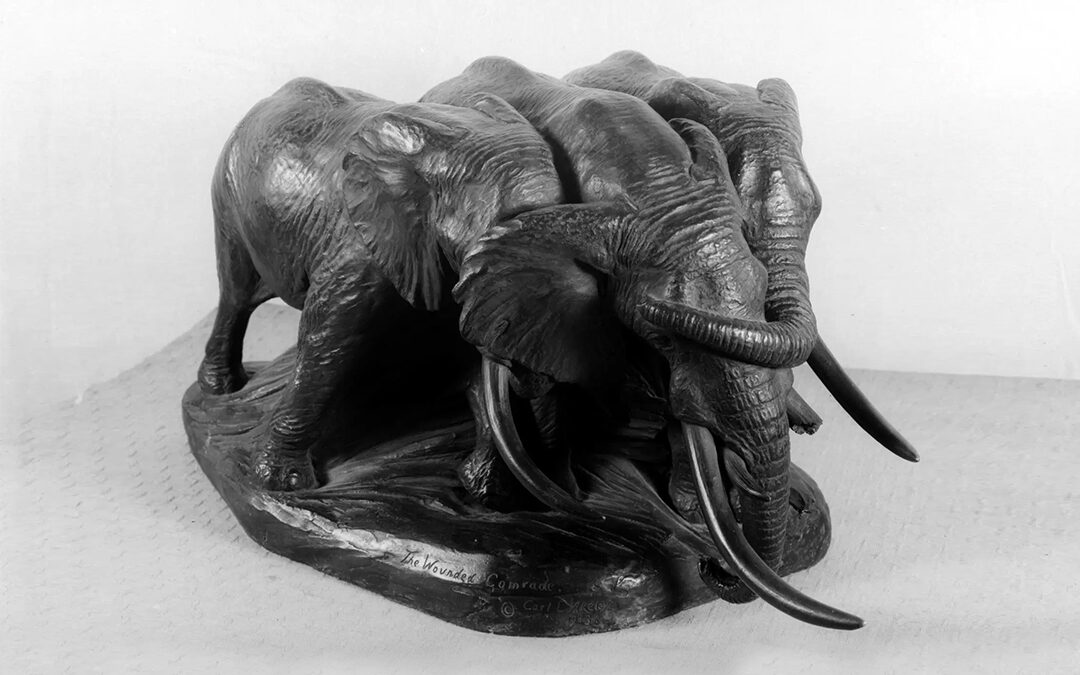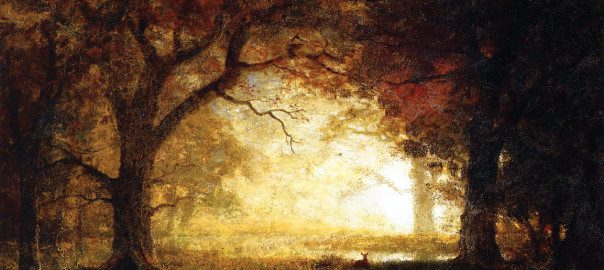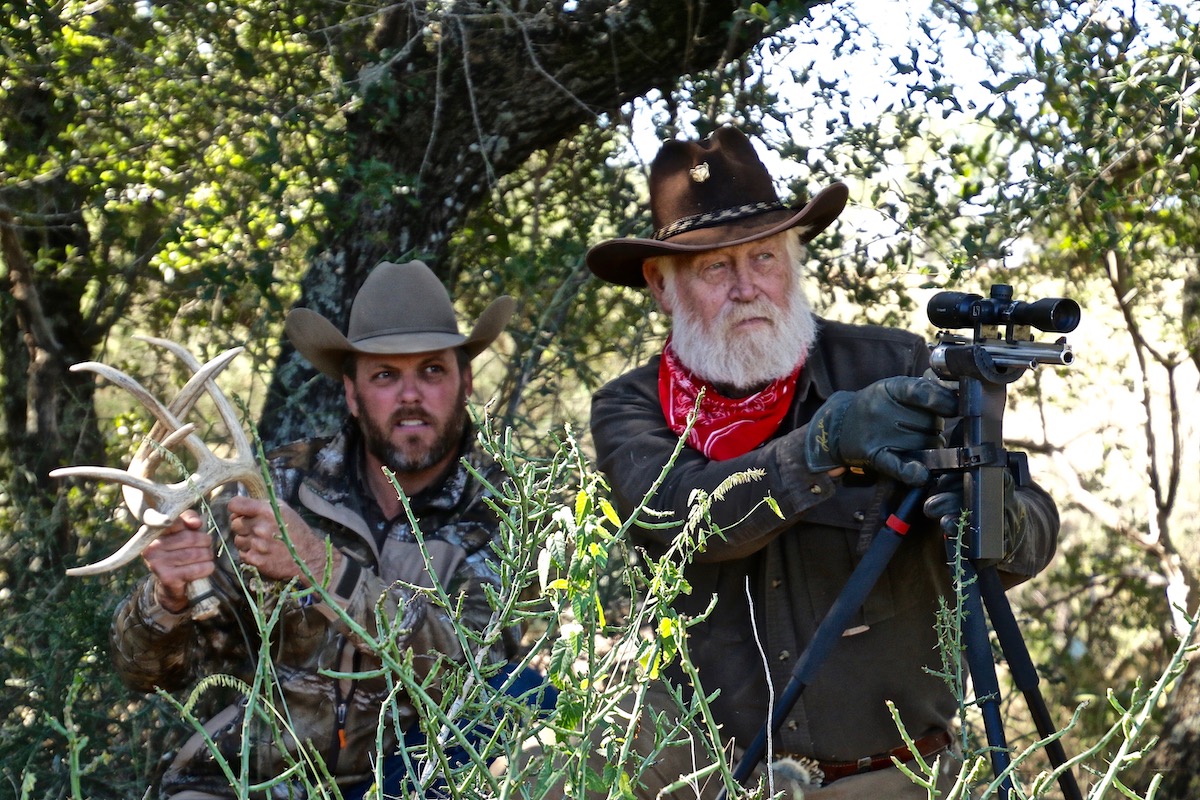It was 1913 when renowned hunter and sculptor Carl Akeley created his most famous sculpture, “Wounded Comrade.”
Inspired by an actual event Akeley witnessed on his first trip to Africa in 1896, and encouraged by fellow sculptor Alexander Phimister Proctor, he sculpted the dramatic bronze, which depicts elephants helping their wounded companion.
The show of concern between elephants is known to happen, but few people were fortunate enough to see it for themselves in those early days of Africa. Many years after Akeley’s sculpture was created and shown to the world, Baron Bror Von Blixen-Finecke, one of the great white hunters of early East Africa, came close to witnessing a similar event, but in this case there was a twist to the story.
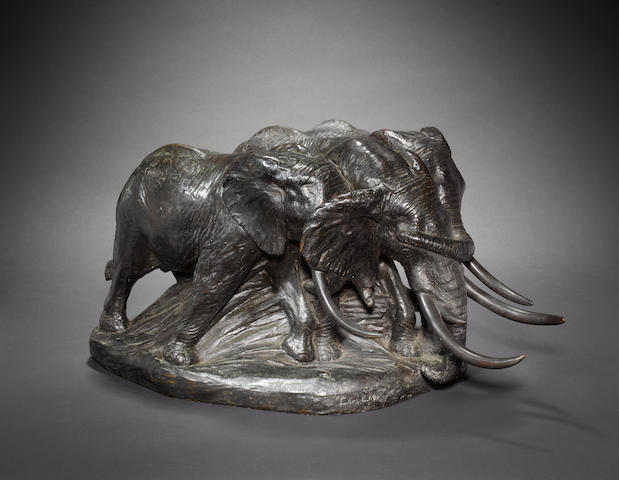
Blix, as he was known to friends, had hunted elephants for several years, and though some of his fellow sportsmen claimed to have seen such incidents, he had not. At least not until his trip to the Belgian Congo where he saw an incident that would support the possibility that such a show of helpfulness is possible.
After his divorce from his wife Karen (aka the writer Isak Dinesen) and her departure from Africa, Blix took up guiding safaris in earnest.
Always in need of money, he decided to hunt elephants, the most difficult animal to track and hunt, but the best source of income at the time.
The Belgian Congo had the largest concentration of big tuskers and boasted some of the largest herds. Although his native help included some former cannibals, Blix was pleased to know they had since changed their dietary habits. He considered them to be the best trackers and they guided him to a great deal of success.
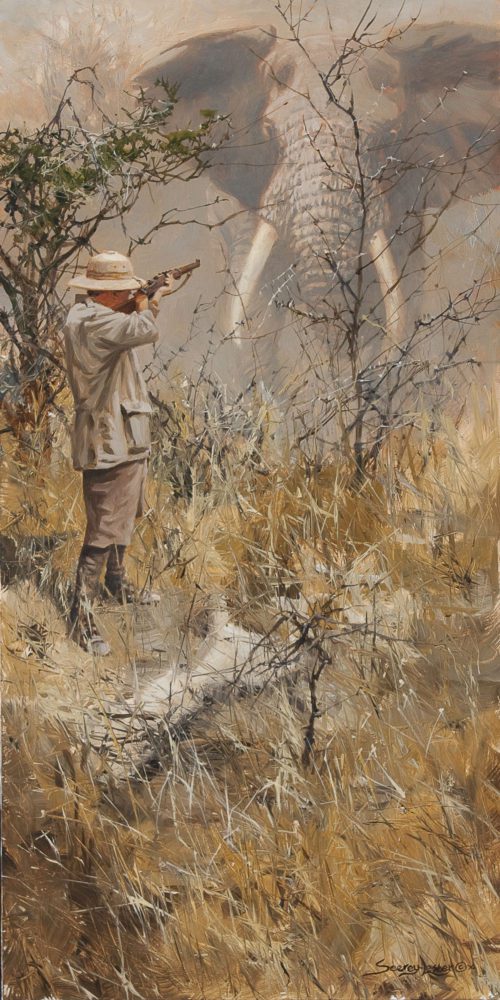
Deadly Aim – oil on panel, 24” x 12”
One day they came upon the spoor of four bull elephants in Ituri Forest. The animals were easy to follow because of their trail of destruction. Eventually they came into a clearing and Blix was horrified by the disaster that appeared before them – it looked like a tornado had gone through.
Native huts surrounded a devastated banana plantation where all the crops had been devoured, uprooted and trampled. Even the natives’ storage hut had been torn down and its contents ruined. The culprits were most certainly the elephants they’d been tracking.
The natives cried out to Blix and his party to kill the elephants, which had destroyed their manyattas along with their livelihood. Blix was more than happy to oblige.
After several days they tracked the herd to a place near the Nile River where they finally sighted their quarry. Blix took aim and fired at a large bull in a thicket, but his bullet only injured the animal. Blix was renowned for being a good shot so this was most unusual for him.
The wounded elephant trumpeted loudly, spun around and charged across a wide stream. It was, in fact, one of the Nile’s main tributaries, which was difficult to navigate.
Blix rushed after the injured elephant, but could only watch as it climbed the bank on the opposite side of the watercourse.
He called for his native porters to find a canoe. While they searched, Blix glassed the other bank and watched the elephant as it slowly made its way along the river. As he followed its progress, he noticed a large expanse of open savannah beyond the bush and in the distance, a large forest.
Blix considered taking a shot, but realized it was too far to make it count. He was concerned that the elephant would quickly find sanctuary in the forest.
Keeping a close eye on the animal’s position until the canoe arrived, he noticed it was slowing down through exhaustion and loss of blood. Finally, it sank to its knees.
Then to Blix’s surprise, another elephant with very large tusks appeared farther down the bank. As he watched with fascination, the new elephant walked toward its fallen companion and proceeded to circle it slowly. With its trunk, the second elephant probed the wounded one and seemed to be assessing its plight.
After further inspection it gave the fallen elephant a push from behind. Then, using its large tusks, the second elephant managed to lift his comrade back onto its feet.
Bror watched in amazement. Perhaps he was going to see how one elephant would help another escape death. This thought soon left his mind when he heard the Samaritan issue a deafening trumpet and saw it charge its wounded comrade, driving its tusks into the animal’s flank and pushing it to the ground. The Samaritan then walked briskly back into the bush and disappeared.
By now the canoe had arrived and Blix headed across the river to the fallen giant. When he got there he couldn’t believe the huge holes in the elephant’s side as a result of the attack.
Blix delivered a final shot at the dying elephant to put it out of its misery. As he looked down at the huge bull, he wondered if that was the other elephant’s intention – to put his comrade out of his misery – for the wounds he created would surely have killed his companion eventually. Perhaps this was an example of one elephant’s concern for another
after all.

